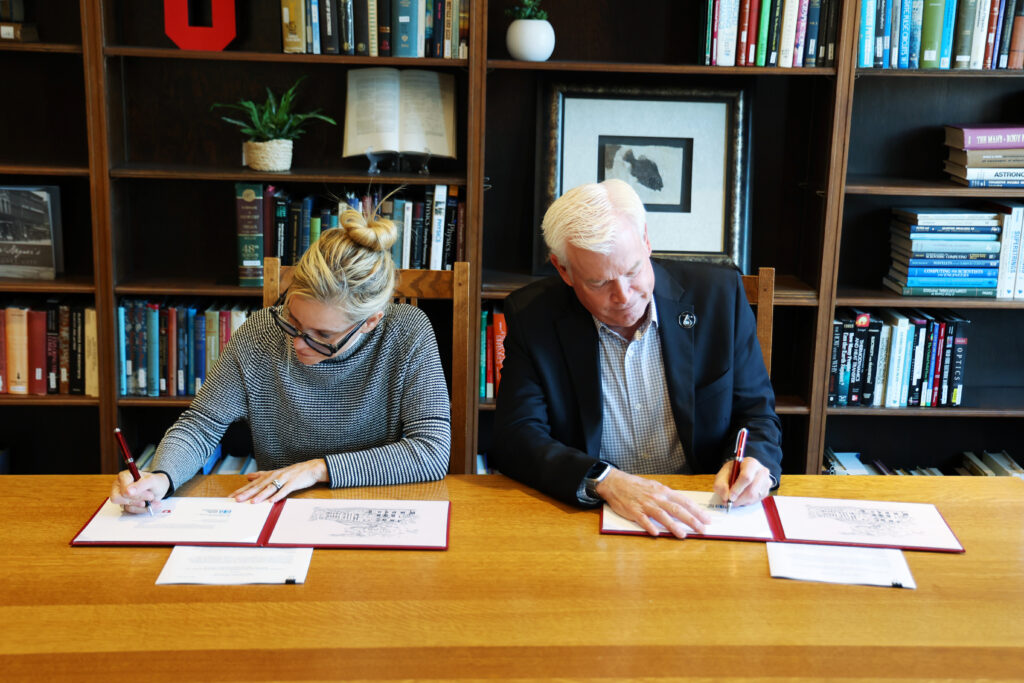By Xoel Cardenas, Sr. Communications Specialist, Office of the Vice President for Research
The University of Utah and Sandia National Laboratories have agreed to a strategic partnership that will look to help develop collaborations in various technical areas, as well as give U researchers and students opportunities to develop new skills and research paths via working on projects in Sandia facilities.
Headquartered in Albuquerque, New Mexico, Sandia is a contractor for the U.S. Department of Energy’s National Nuclear Security Administration and supports several federal, state, and local government agencies, companies, and organizations. Through partnerships with academic, governmental, and commercial institutions, Sandia conducts research and development that supports national security.
Sandia operates laboratories, testing facilities, and offices in multiple sites around the United States. According to the memorandum of understanding (MOU) document signed by both parties, the partnership will allow Sandia and U of U researchers and students to have presence on each other’s campuses. Students and faculty will have the chance to work for designated periods on projects in Sandia facilities. Graduate students will have opportunities to develop new skills and research paths via joint research collaborations.
Sandia says partnerships with universities and other labs bring new technologies to the marketplace and contribute to the economic wellbeing of the nation.
With the strategic partnership in place, the U and Sandia will look to develop collaborations in various technical areas which could lead to the development of funded programs. Some of the areas include:
- Biological Science: Biomanufacturing (e.g., bioenergy and biomass conversion), biodefense (e.g., emerging infectious disease and pathogenesis), etc.
- Computing, Information Science, and Mathematics: Artificial intelligence, future computing technologies (e.g., Quantum and device physics), high performance computing, new mathematics and algorithms, etc.
- Earth, Energy, and Environmental Science: Earth and Geosciences, renewable energy technologies, greenhouse gas mitigation, climate change adaptation, climate intervention strategies, etc.
Sandia and the U of U will look to expand collaboration and participation in U-led activities that have a high degree of mutual interest within these areas, including the Aerospace Research Hub and Energy Futures Research Engine; Center for Engineering Innovation; Utah Nanofabrication Laboratory; and the Wilkes Center for Climate Science & Policy, among others.
“Both Sandia and Utah recognize the need to define and sustain the future of science and engineering for national security,” the partnership documents state. “The purpose of this MOU is to provide an enhanced model for a strategic partnership between our organizations that will create strengths together that neither institution has alone, target areas that have potential to make substantive national impact and provide the basis for implementing increased interactions and collaborations between individual staff, faculty, and students at Sandia and Utah.”
Sandia will consider several actions that would amplify the partnerships’ benefits to the U, including:
- Provide opportunities for internships, rotations, or other mobility arrangements for undergraduate/graduate students and postdoctoral researchers.
- Enable Utah students to benefit from the knowledge and technical expertise of Sandia personnel through graduate student mentorship and/or instruction.
- Sponsor student capstone projects and provide technical mentorship in topic areas of mutual interest.
The partnership between Sandia and the U shall remain in effect for a period of five years, according to the MOU.
U of U-Sandia signing ceremony

On Nov. 7, the U hosted a small ceremony in which representatives from both the U of U and Sandia signed a memorandum of und
erstanding (MOU) for the partnership. Attending on behalf of Sandia was Douglas Brian Kothe, Advanced Science & Technology Associate Labs Director and Chief Research Officer. Joining him was Joel Lash, Center Director, Material, Physical and Chemical Sciences; and Mary Monson, Senior Manager, Technology Partnerships and Business Development.
Representing the U were Dr. Erin Rothwell, Vice President for Research; Dr. Mitzi Montoya, Senior Vice President for Academic Affairs; Dr. Peter E. Trapa, Dean of the College of Science; and Dr. Charles Musgrave, Dean of the College of Engineering.
The U of U delegation welcomed Sandia representatives and presented them with an overview of research at the U. The group then met with researchers throughout campus. Afterward, the signing of the MOU was held in the Crocker Science Center, with Dr. Rothwell signing the document on behalf of the U, and Kothe signing for Sandia. Utah-based Sandia employees also attended the ceremony.
“Research has always been and will continue to be the foundation of our university,” said Dr. Rothwell. “Our strategic partnership with Sandia is another example of the U’s dedication to bringing one-of-a-kind research opportunities and experiences to our students and faculty that are unique to the University of Utah.
“This partnership will not only help U researchers work and learn in world-class research facilities, but also help be a part of accomplishing Sandia’s mission in bringing essential science and technology to resolve our nation’s most challenging security issues.”
For more information on Sandia National Laboratories, click here.
More information on U of U Research can be found here.
